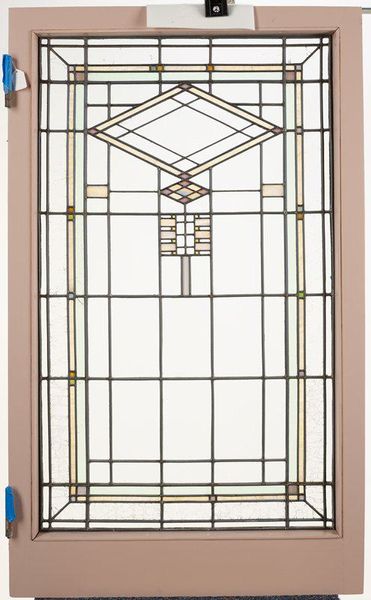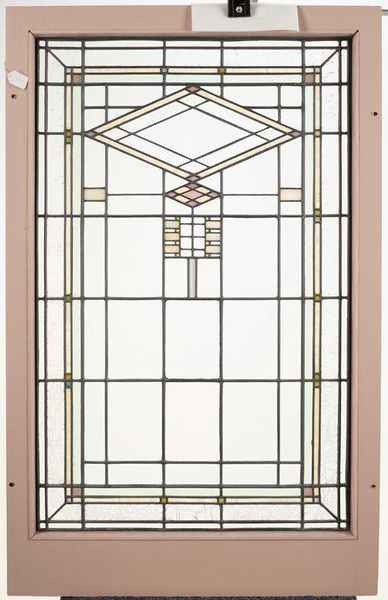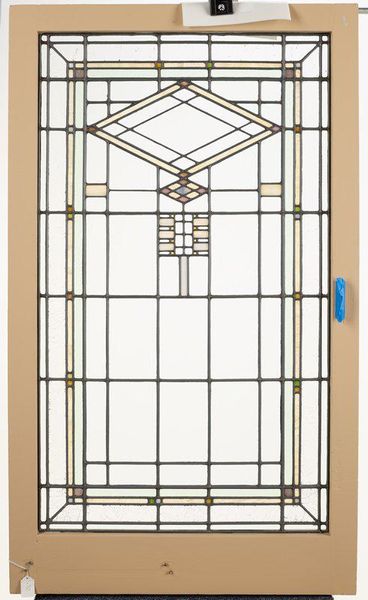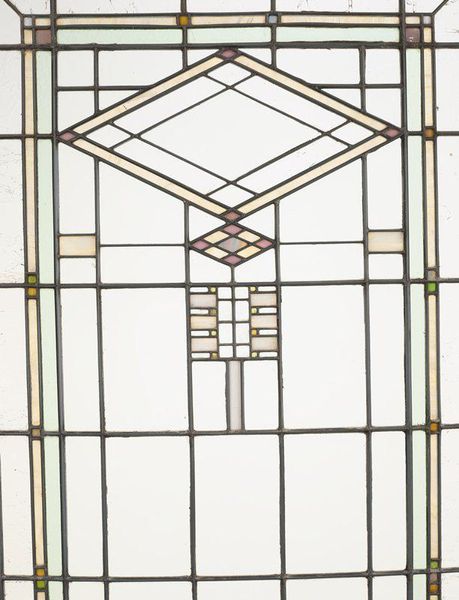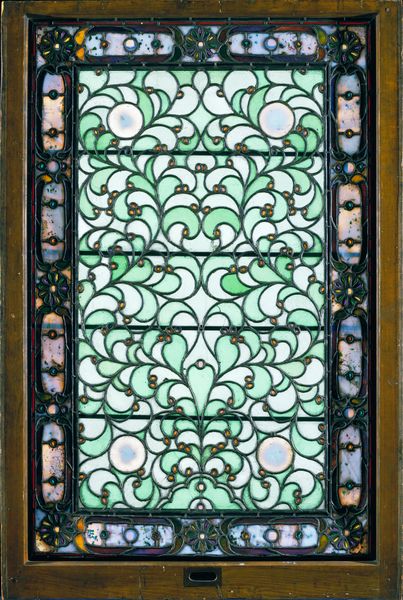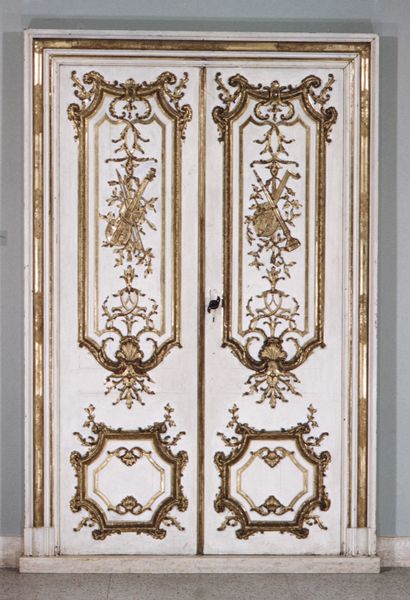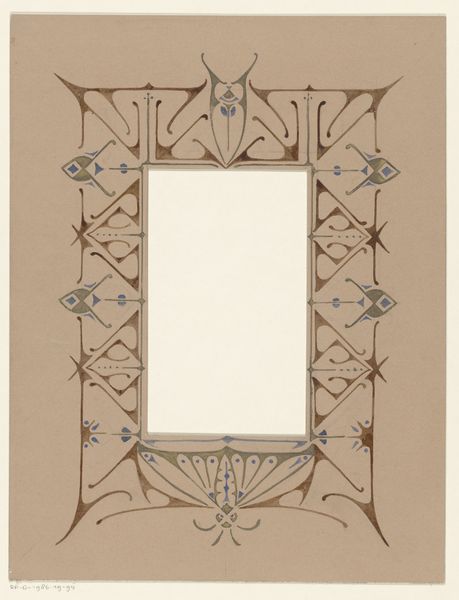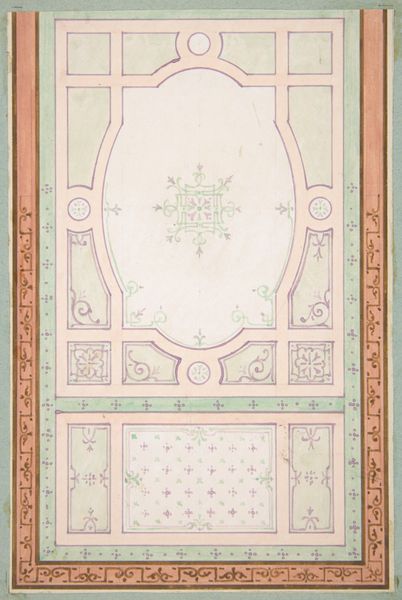
drawing, glass, architecture
#
drawing
#
art-nouveau
#
glass
#
geometric
#
architecture
Dimensions: 45 x 26in. (114.3 x 66cm)
Copyright: No Copyright - United States
Curator: This striking piece is titled "Window," created around 1913 by William Gray Purcell. It currently resides here at the Minneapolis Institute of Art. Editor: It has a quiet beauty, doesn’t it? The geometric precision and soft hues suggest a sanctuary, a deliberate withdrawal from the chaotic world outside. It reminds me of certain textile designs. Curator: The use of glass, a common building material, is quite telling. It's more than just a barrier against the elements; it plays a key role in shaping the visual and tactile experience of space. Consider also, stained glass production during this period—who was making it, and under what conditions? Editor: Absolutely. The clean lines of the art nouveau style speak volumes about early 20th-century ideas of modernity, which can also reflect deep societal issues relating to class and cultural identity at the time, not to mention debates about function over ornamentation. This wasn't merely decoration. Curator: Exactly. The glass pieces themselves are relatively simple, unadorned, maximizing the linear elements. The framing too—plain, unpretentious—almost industrial. It certainly shifts perceptions of architectural elements to center function as well as experience. Editor: There's a palpable tension between austerity and opulence, though. The deliberate sparseness can invite interpretations about labor and production, and that affects how different audiences and communities encounter this kind of piece. Was such sleek modern design accessible for the masses, or was it really the aspiration of a specific demographic? Curator: I think both are true. On one level, its accessibility can be seen in its straightforward materials and clean designs; on another, we are reminded of that time's utopian projects that intended social leveling through mass production. How this plays out through architecture is particularly significant because people both consume and inhabit it. Editor: Yes, thinking about windows, particularly adorned windows such as this piece, you see clear metaphors regarding those who inhabit the house as a whole. Who had access? What does it mean that it filters the outside world based on social, economic, or racial divisions that might also govern how architecture functions? Curator: Considering both design process and social position within these types of projects opens fascinating avenues for inquiry. The tension between access and intention keeps its message potent even today. Editor: I concur entirely. Seeing this "Window," now, encourages critical reflection about these themes of production, reception, and the architecture of the modern world.
Comments
No comments
Be the first to comment and join the conversation on the ultimate creative platform.


